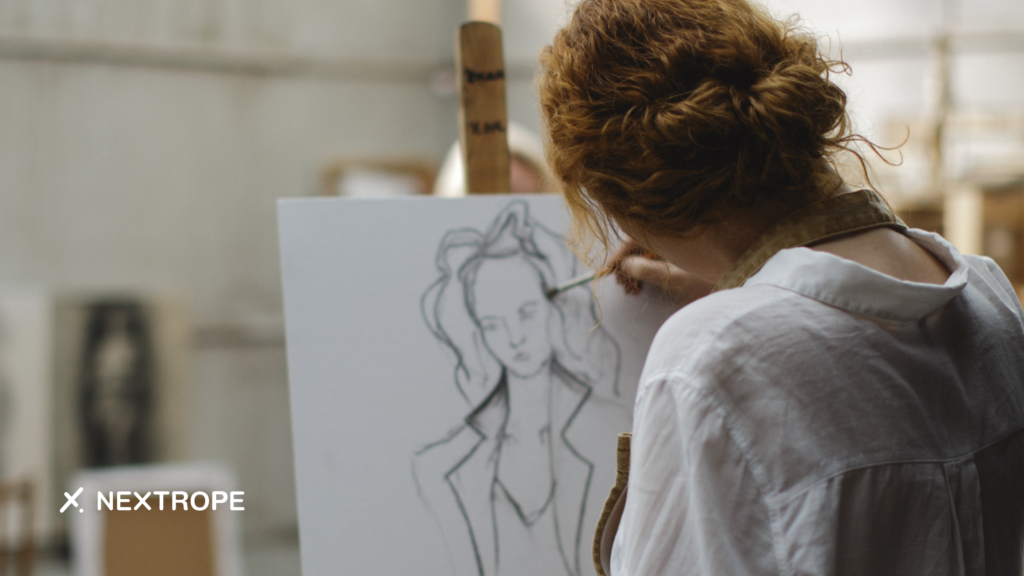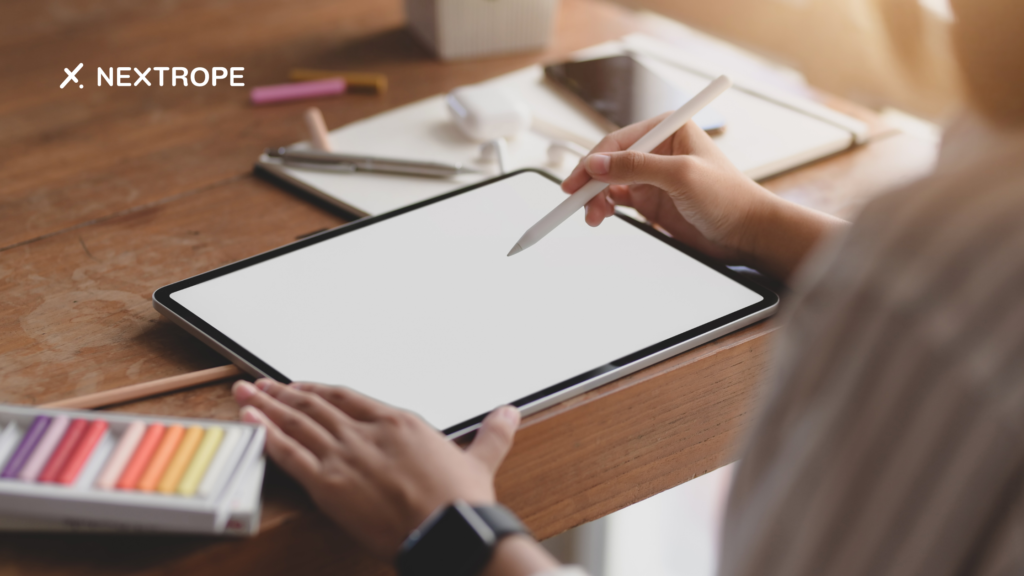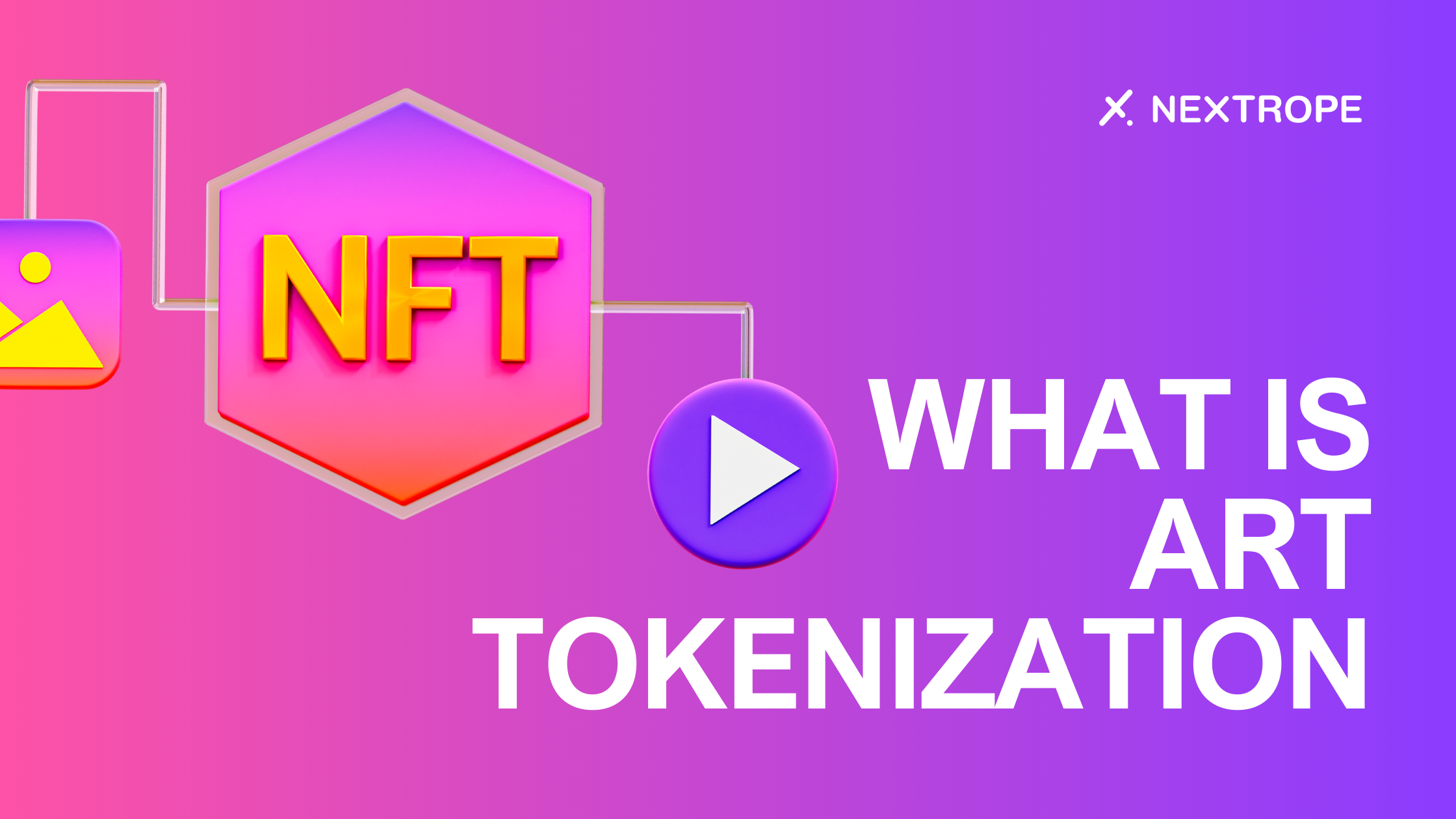Understanding Art Tokenization
The concept of art tokenization involves transforming tangible art pieces or exclusive digital artworks into a digital token present on a blockchain. This process allows the division of ownership rights of an artwork and facilitates their trade on digital platforms. Acting as evidence of authenticity and ownership, these tokens digitalize the artwork’s value. They denote a fraction of the ownership, enabling multiple people to have stakes in a single art piece. This approach not only introduces liquidity to the traditionally illiquid art market but also democratizes it by making art investment accessible to a wider audience.
Art tokenization primarily aims to connect the conventional art world to contemporary financial technology. Art tokenization enhances accessibility, simplifies transfers, and expands the market for artworks. Moreover, since these tokens reside on a blockchain, they maintain a transparent provenance or history of ownership, aiding in the prevention of forgery and ensuring authenticity.

Defining NFTs
Non-Fungible Tokens (NFTs) are distinct digital tokens authenticated on a blockchain, mainly employed to signify ownership of an exclusive digital item or content. The term “non-fungible” signifies that each token is unique and irreplaceable, as opposed to cryptocurrencies like Bitcoin or Ethereum, which are fungible and exchangeable.
NFTs gained popularity in representing digital arts, collectibles, music, videos, etc. Acquiring an NFT allows the buyer to own a one-of-a-kind piece of digital content. This ownership can be retained, sold, or transferred similarly to physical assets.

A vital feature of NFTs is their role as a digital certificate of authenticity. Utilizing blockchain technology, each NFT establishes the originality and ownership of a digital object and makes it tamper-resistant. This characteristic makes NFTs particularly attractive in the realm of art, where an artwork’s value greatly depends on its authenticity and provenance.
Tokenized vs Non-tokenized Art
In the evolving landscape of art and technology, a distinct divide between tokenized and non-tokenized art has emerged. Tokenized art, represented as digital tokens on a blockchain, offers a modern approach to verifying authenticity, fractional ownership, and providing an easily transferable record of provenance. This allows for a broader audience to invest in and own portions of artworks, potentially democratizing the often exclusive world of art ownership.
On the other hand, non-tokenized art remains rooted in traditional forms of ownership and trading, relying on physical possession, conventional galleries, and expertise for its valuation and authenticity. While this traditional form provides a tangible, often deeply personal connection between the artwork and its owner, it can also be encumbered by challenges of liquidity, accessibility, and the occasional ambiguity in provenance. Both realms, though different in their operations, underscore the profound value and significance of art in human culture, each catering to varied audiences and preferences.

Steps to Tokenize Art
1. Platform Selection. Choose a preferred blockchain platform, such as Ethereum, Flow, or Binance Smart Chain.
2. Digital Depiction. Produce a top-quality digital version of the artwork (high-resolution JPG, PNG, or 3D model).
3. Smart Contract Creation. Employ a smart contract development tool like OpenZeppelin or Remix to write the contract underpinning the NFT, which establishes rules for metadata, rarity, and other aspects.
4. Contract Deployment. Launch the smart contract on the blockchain using tools like MetaMask or Truffle and possibly incurring gas fees.
5. NFT Minting. Generate the unique NFT token by invoking a smart contract function and connecting it to the digital representation of the artwork; it will be stored in a digital wallet.
6. Marketplace Listing. Offer the tokenized art for sale or auction on NFT marketplaces such as OpenSea, Rarible, or Foundation.
7. Royalty Set-up. Many platforms allow royalty establishment so that every NFT resale earns the original artist a percentage as ongoing compensation.
8. Legal Consequences. Investigate possible legal ramifications associated with copyright and intellectual property rights before tokenizing.
9. Art Promotion. Leverage social media networks, artist communities, and other forums to publicize tokenized artwork and entice buyers.
By adhering to this process, artists can capitalize on blockchain technology to diversify revenue sources, expand their global reach, and secure authentication and provenance for their pieces.

The Advantages of Tokenizing Art
1. Enhanced Accessibility. By democratizing art ownership, tokenization of art enables broader access to investments in art pieces, regardless of a person’s geographic location.
2. Economic Empowerment. Artists have the opportunity to tokenize their work and sell it directly to the public, facilitating higher profits by potentially bypassing intermediaries.
3. Authenticity & Provenance. Tokenized art allows for a secure and transparent record of ownership on the blockchain, ensuring the genuineness of the artwork and its complete ownership history.
4. Liquidity. Traditional art assets are often illiquid and time-consuming to sell, whereas digital tokenized art can be easily traded on platforms, resulting in increased liquidity.
5. Fractional Ownership. Dividing ownership of tokenized art into smaller shares enables multiple investors to own a portion of a single artwork, allowing average investors access to high-value pieces.
6. Worldwide Market. Tokenizing art permits artists to reach a global audience, which expands access for diverse investors and collectors.
7. Safe Transfers. Transferring ownership becomes more secure, transparent, and direct through the use of blockchain technology.
8. New Art Forms & Innovation. Artists are able to incorporate interactive components, augmented reality, and other inventive elements within their tokenized works, fostering the development of unique art genres and experiences.
The Profitability of Art Tokenization in 2023
Based on the rapid expansion of NFTs and significant interest in tokenized art, it appears that art tokenization is profitable in 2023. The following reasons contribute to its success:
- Expanding Market. Leading up to 2023, there has been a noticeable surge in digital artists, collectors, and investors entering the NFT space—fueling market growth.
- High-Value Sales. Numerous tokenized artworks and NFTs have sold for millions, garnering substantial media attention and reinforcing the value and potential of this sector.
- Widespread Acceptance. Mainstream entities, galleries, and celebrities have begun to support art tokenization, bolstering demand and endorsing its importance.
- Extended Collector Base. The digital nature of tokenized art, coupled with growth in online platforms, broadens the global collector base—artists are no longer limited to local or regional markets.
- Technological Progress. As blockchain technology and NFT platforms evolve, creating and trading tokenized art becomes more streamlined and efficient—lowering barriers to entry.
Conclusion
Art tokenization, an elegant fusion of time-honored tradition and cutting-edge innovation, is undeniably revolutionizing the realm of art ownership, exchange, and admiration. With the art world poised at the intersection of technology and ingenuity, blockchain’s capacity to democratize, fortify, and invigorate the art sector cannot be overlooked.
It is crucial to proceed with caution as the potential is truly enticing. As with any budding industry, challenges will arise, spanning from regulatory barriers to market oversaturation. But, the perpetual essence of art – its capacity to break barriers, motivate generations, and encapsulate human experiences – guarantees its importance whether it’s in a physical gallery or on the blockchain.
Navigating the complexities and possibilities ushered in by art tokenization serves as a reminder that art, in every form, stands as a tribute to our shared culture and advancement. The merger of art and technology not only presents financial prospects but also lays the groundwork for a more inclusive, varied, and global artistic community.



